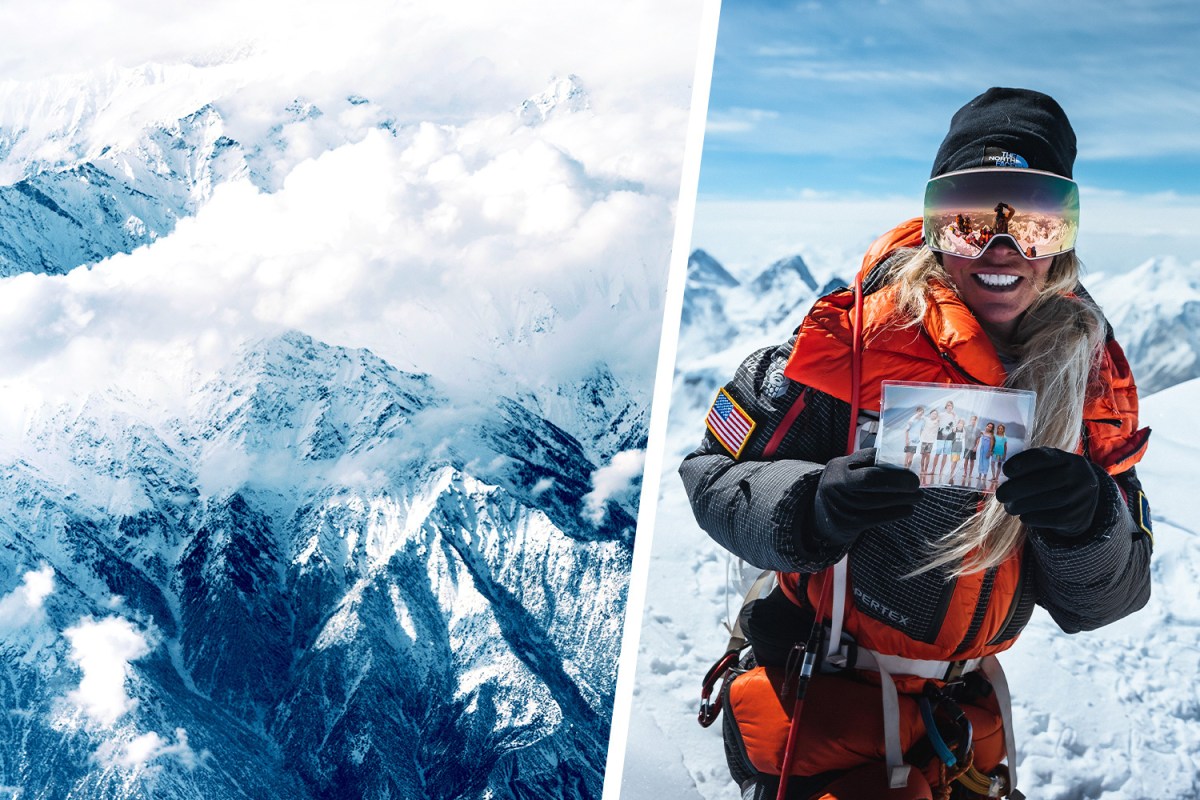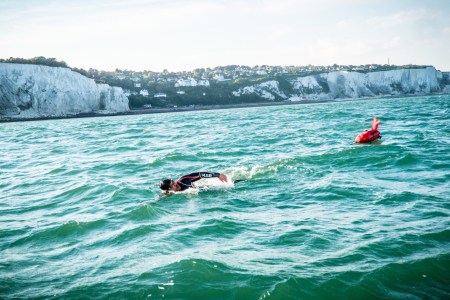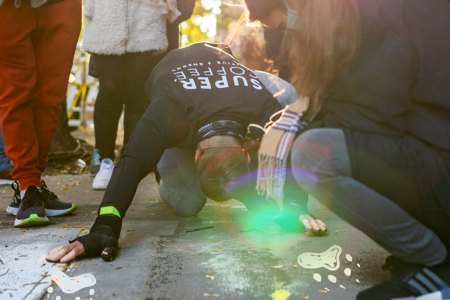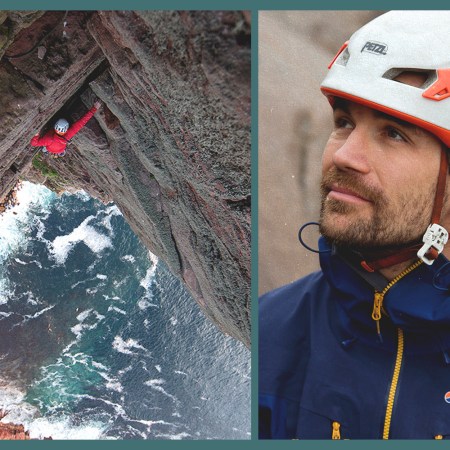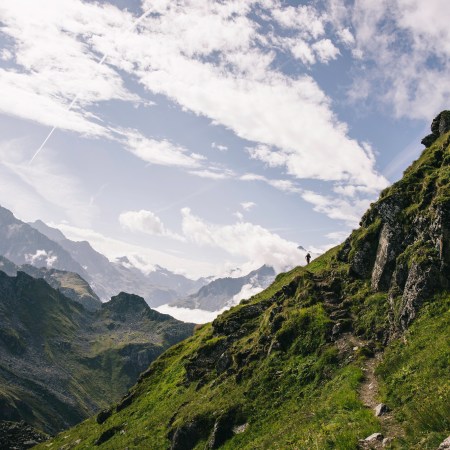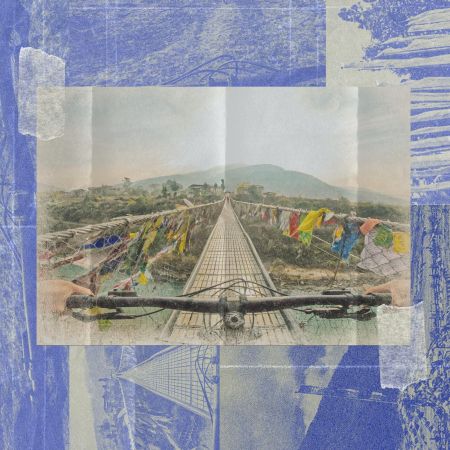Technically speaking, Jenn Drummond is afraid of heights. This seems almost inconceivable, considering she’s now the first woman ever to have climbed the Seven Second Summits — the collection of second-highest peaks on every continent, which includes K2 in Pakistan’s Karakorum, the second-highest peak in the world.
And yet, it’s true: in those early days, training in the climbing gym, Drummond says she would “get get sick to [her] stomach, turn ghost-white, start to shake, and sweat.” The fear wasn’t just in her mind, it was taking over her body. But her coach convinced her to go one hand-hold higher and then come back down, over and over again, until eventually, the exposure therapy started to set. “When I fell the first time, my heart almost came out of my body. But I came to trust in the rope.” She never really conquered the fear, she only learned to live with it.
Drummond has learned to live with a lot. A mother of seven, and a businesswoman based in Utah, she survived a near-fatal car accident on a busy highway five years ago. Her car flipped three times before crashing into the median. She somehow lived, walking away with minor injuries. Then, less than a month later, one of her friends died while out on a run. She struggled to fathom her own survival.
Two years later, turning 40, Drummond decided to commemorate her fifth decade by training for a mountaineering expedition in Nepal. But her sights shifted after learning about the Seven Second Summits; they’d been completed for the first time by an Austrian named Christian Stangl 10 years ago, and until Drummond began her quest, no woman had completed the list. It made sense to her: seven kids, seven peaks.
She climbed Chile’s Ojos del Salado, Kenya’s Mount Kenya, Russia’s Mount Dykh-Tau, Antarctica’s Mount Tyree, Pakistan’s K2 (completing it after a first attempt that went awry), Canada’s Mount Logan, and Australia’s Mount Townsend.
In other words, she’s the coolest athlete you probably haven’t heard of…though she insists her overriding philosophy — and a core tenet of her upcoming book, BreakProof — is that “big mountains take big teams.” We recently caught up with the adventurer to discuss her multi-year achievement, how a mountain of adversity shifted her perspective, what it’s like to raise seven kids and the methods that helped her refuel and reset.
How I Swam Around the Entire Island of Great Britain
All it took? 157 days, 1,792 miles and more than a few mental pep talksInsideHook: What’s your athletic background?
Drummond: I’ve been an athlete my whole life, which built a strong foundation for mountaineering. Looking back, I really couldn’t have picked better sports to play. I was a gymnast at a young age, giving me really good body awareness and strength. I then got into playing soccer, which trains both your sprint muscles and endurance muscles. I then got into triathlon in my young adult years, which is great for mindset training, endurance, and switching between activities. It just reminds you that shifting gears is hard at first, but once you get into a new flow, upward you go. I was also a lifelong snow sports athlete, so I’m familiar with observing condition hazards and dressing for sport in winter conditions. I was always doing something with my body, but now, with the world record goal, I was more streamlined and focused; every workout had an intention.
How did your near-fatal car accident influence your perspective on life?
It was a turning point. It profoundly shifted my perspective. Before the accident, I identified as a control-focused individual, always pushing harder and exerting more effort as my way to achieve goals. I believed that control and relentless effort were the keys to success. But the accident brought a moment of unexpected clarity. As my car collided with the semi-truck, I instinctively knew that any attempt to fight the overwhelming force would be futile. In that moment, I chose to surrender to the experience, an action that paradoxically may have contributed to my survival. This decision to “roll with the car” rather than resist it became a powerful metaphor for how I approach life now.
Post-accident, my perspective shifted from one of control to one of adaptation and surrender. Instead of doubling down when faced with challenges, I now seek ways to relax into situations and allow things to unfold naturally. This doesn’t mean I’ve become passive…I’ve just learned the value of resilience and adaptability. It’s about finding a balance between making efforts and knowing when to yield, to move with life’s unpredictable currents instead of against them.
Did you start this stage of your life by attending a specific course or joining a climbing gym?
Yes, I hired a coach to work with me at a climbing gym. My schedule is very limited due to running a business and being a mom, so I organized private lessons. This also allowed me to progress faster; my coach catered each lesson to where I needed to improve, and also helped with weightlifting and cardio plans.
What did a typical training week look like for you?
I had to find ways to creatively incorporate training into my everyday responsibilities. I often conducted business calls on an angled treadmill wearing a weighted vest, in order to get endurance training in. Early mornings were especially crucial for my training. I’d wake up before the rest of the house to fit in a session, ensuring I was back in time for the morning rush of getting the kids ready for school. I utilized after-hours at our ski resort for strength and endurance training, using special skins on my skis to ascend slopes, and then ski back down. Training was also a family affair; I involved my kids in strength training and yoga sessions. On days filled with back-to-back commitments, I managed to squeeze in high-intensity workouts, like 30-minute stair climbing sessions at home.
How did you rest/refuel your body after each climb?
My recovery routine was centered around both physical recovery and reconnecting with loved ones. One of the first things I looked forward to was indulging in fresh foods. Salads and fruits don’t last on the mountain, so they were a real treat after each expedition. I always allowed myself a week off following each climb. This period was crucial for my physical rest, given the intensity of the expeditions. But more than that, it was a time for my soul and mind to rejuvenate. These climbs weren’t just physical endeavors; they were holistic experiences that engaged my mind, body and soul. Reconnecting with my family and friends was an essential part of my post-climb routine. It was a time to ground myself back into my personal life and share the experiences and gratitude I felt.
How much time separated one climb from the next?
Typically three months. But this varied depending on the schedule and the intensity of the expeditions. There were instances when I only had a month’s break, and towards the later part of my climbing journey, the gaps extended to as long as six months. This flexible scheduling allowed me to listen to my body and mind, and ensure I was fully prepared and eager for the next adventure.
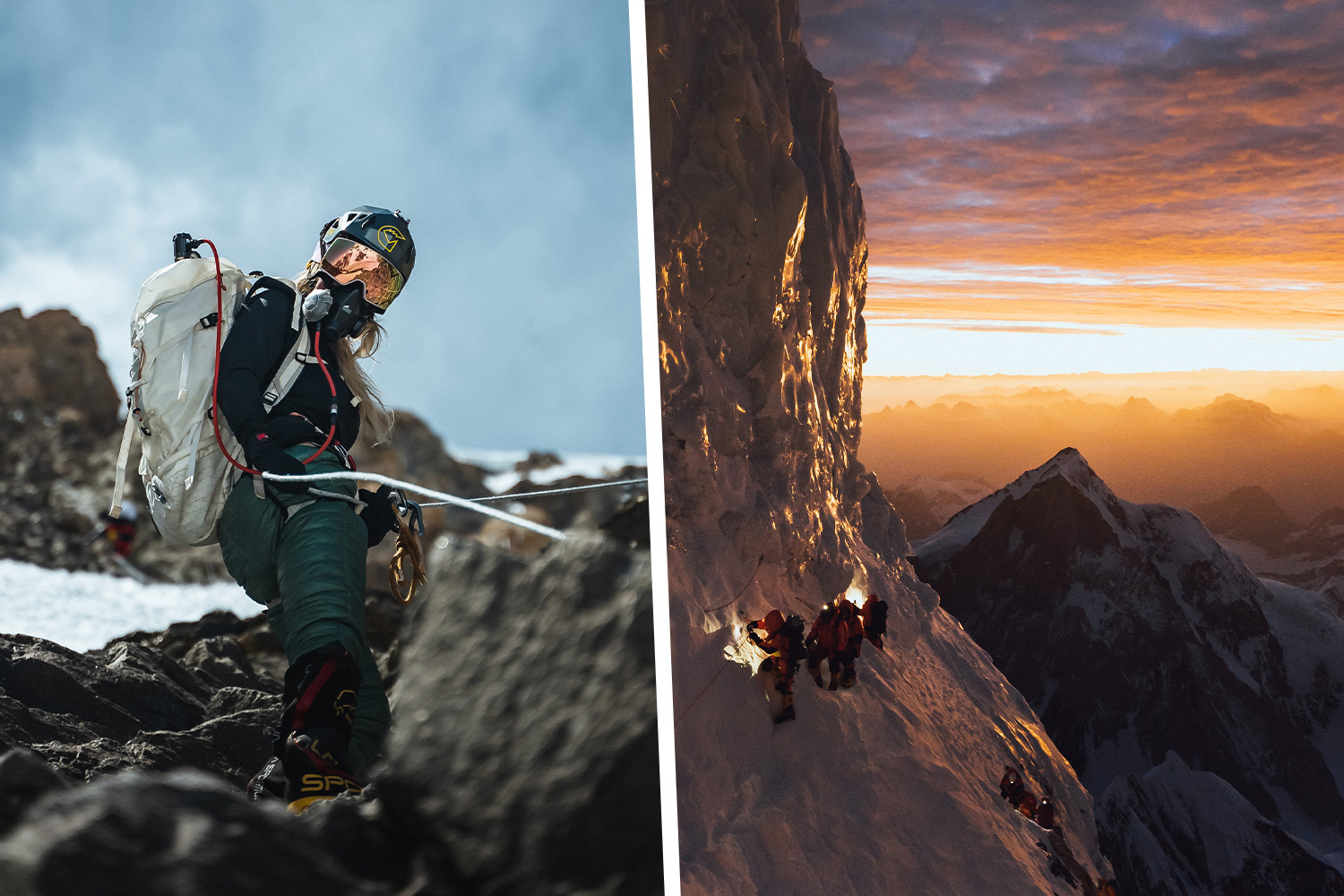
Could you share a particularly memorable or challenging experience from climbing the Seven Second Summits?
One of the most memorable and challenging experiences I had during my pursuit of the Seven Second Summits was on Mt. Everest. Mt. Everest isn’t even a Second Summit but it was a “training mountain” for me to tackle K2, the second-highest mountain in the world…and a lot harder than Everest. It’s interesting how our memories often cling to the moments of greatest challenge rather than the easy stretches. For me, a particularly vivid memory is crossing my first ladder on Everest.
As I said, I have a fear of heights, so this part of the climb was especially daunting. The ladders used in these climbs are far from stable and certainly not what you’d call OSHA approved. The first time I encountered one, it took me a good 30 minutes to muster up the courage to cross it. My process involved a few steps. First, I gave myself a pep talk, trying to mentally prepare for the task. Then, I listened to some pump-up music to boost my confidence. I also pulled out a letter from a friend, which I had saved for moments when I felt scared. This letter provided me with the extra encouragement I needed. And finally, I started the crossing, repeating the phrase “safe step” to myself the entire time to maintain focus and calm.
When I reached the other side, my team and I had an impromptu dance party to shake off the remaining nerves and celebrate the achievement. That moment of overcoming my fear and successfully crossing the ladder was a turning point for me. It wasn’t just about conquering a physical challenge; it gave me the courage and confidence to tackle all the other obstacles that came up later in the journey. It was a testament to facing fears head-on and finding strength in the midst of vulnerability.
How about something that surprised you?
When I finally completed my pursuit of the Seven Second Summits, I was surprised by the complexity of emotions that followed. Like many, I anticipated feeling purely happy and triumphant. While there was definitely a sense of celebration and achievement, there was also an unexpected tinge of sadness mixed into those emotions. It stemmed from a few things. First, there’s the realization that a significant, purpose-driven chapter of my life had come to an end. When you invest so much time, energy, and passion into a long-term goal, its completion leaves a void that isn’t easily filled. The daily routines, the challenges, the excitement of preparing for the next climb…all of it becomes a part of your identity. And when that’s suddenly no longer there, it’s almost like losing a part of yourself.
Another aspect of this sadness is the end of the anticipation and the excitement that comes with pursuing something so monumental. There’s a unique thrill in setting lofty goals and methodically working towards them. The journey itself, with all its ups and downs, becomes a source of fulfillment. When it ends, you miss the adrenaline rush, the sense of purpose, and even the struggles that gave the journey its flavor. This pursuit connected me with a community of fellow climbers, enthusiasts, and supporters, creating bonds forged through shared experiences and challenges. But the conclusion of the journey also meant fewer interactions with this community, which can feel like a loss.
However, this mix of emotions is also a reflection of the depth of the experience. The sadness acknowledges the significance of the journey and the growth that came with it. It’s a natural response to the end of any significant chapter in life, and it coexists with the joy and pride of the accomplishment. Embracing this complexity is part of processing and celebrating the entire experience.
After scaling the Seven Second Summits, what are your future goals in mountaineering or other pursuits?
I want to continue to explore, challenge myself and inspire others. One immediate plan I’m thrilled about is I’m taking my three oldest sons to Africa to climb Kilimanjaro in February. It’s an opportunity not just for personal adventure but also to sharing these incredible experiences with my family. That’s deeply important to me.
While mountaineering holds a special place in my heart, I’m keenly aware that the world is full of diverse pursuits. I don’t want to limit myself to just one type of adventure. Whether it’s exploring different cultures, trying out other forms of adventure sports, or engaging in environmental conservation efforts, I’m open to wherever my curiosity leads me.
I firmly believe that life is a series of evolving interests and passions. Right now, I’m in a phase where I want to soak in as many different experiences as possible. The beauty of this approach is the freedom it gives me to discover new passions and embark on fresh adventures. Somewhere along this journey, I’m sure something will capture my heart and lead me to my next big pursuit. Until then, I’m excited to explore, learn, and grow, both as a mountaineer and as an individual seeking to make a positive impact.
How (and Why) I Bear-Crawled an Entire Marathon
Plus other memories and musings from Devon Lévesque, the most unstoppable fitness influencer on InstagramDo you mind sharing any key takeaways or themes from your upcoming book?
One of the central themes in my upcoming book BreakProof is encapsulated by the phrase: “Big mountains take big teams.’” The concept has been a pivotal part of my journey and is something I believe resonates far beyond the realm of mountaineering.
In life, just as in climbing, we often face challenges that seem insurmountable. You don’t have to tackle these challenges alone. The bigger the goal, the larger and more supportive the team needs to be to achieve it. This is a metaphor for any significant endeavor in life, whether it’s a personal goal, a professional project, or an entrepreneurial venture. I emphasize the idea that when we find ourselves exhausted or contemplating compromising on our goals, it’s crucial to stop and ask ourselves: Are we trying to take on too much alone? Do we have a sufficient support system in place to reach our ‘summit’ and return safely?
This concept of team-building and relying on others is not just about delegating tasks or sharing responsibilities; it’s about recognizing the value of diverse perspectives, skills, and emotional support. ‘BreakProof’ delves into the idea that success, in any form, is rarely a solo endeavor. It’s a collective effort where each team member plays a crucial role. By embracing this concept, we can not only achieve greater things but also ensure that our journey to the top is sustainable, enjoyable, and fulfilling. The book aims to encourage readers to build their own ‘expedition teams’ for life’s big climbs, understanding that together, we are stronger and more resilient.
Any advice for those who find themselves unable to take advantage of “evolving interests and passions” as you do?
Slowly add new things, but continue to do the activities you love. If you have a cardio workout but are sick of the treadmill, is there another way you can get the cardio workout done? Maybe you can ride your bike, swim laps, or run on a trail instead. I love variety, so being able to swap things in has always been important to me. Try a group meet-up or do a group class first to see if it is even something you are interested in taking on. If you’re shy, do a private lesson first to build confidence to do the new thing. It’s all about loving yourself through whatever experiences you’re exploring. Allow that to look however it needs to look for you.
And most importantly, make sure to give yourself a little grace. Most of us are amateur athletes. On days when life got hectic, and I had to miss a workout, I would remind myself that I’m a multi-faceted human and not all things will be executed perfectly. If I had to miss a workout, I would try to get 10 minutes of whatever activity in; that always felt better than taking a zero for the day.
Whether you’re looking to get into shape, or just get out of a funk, The Charge has got you covered. Sign up for our new wellness newsletter today.
